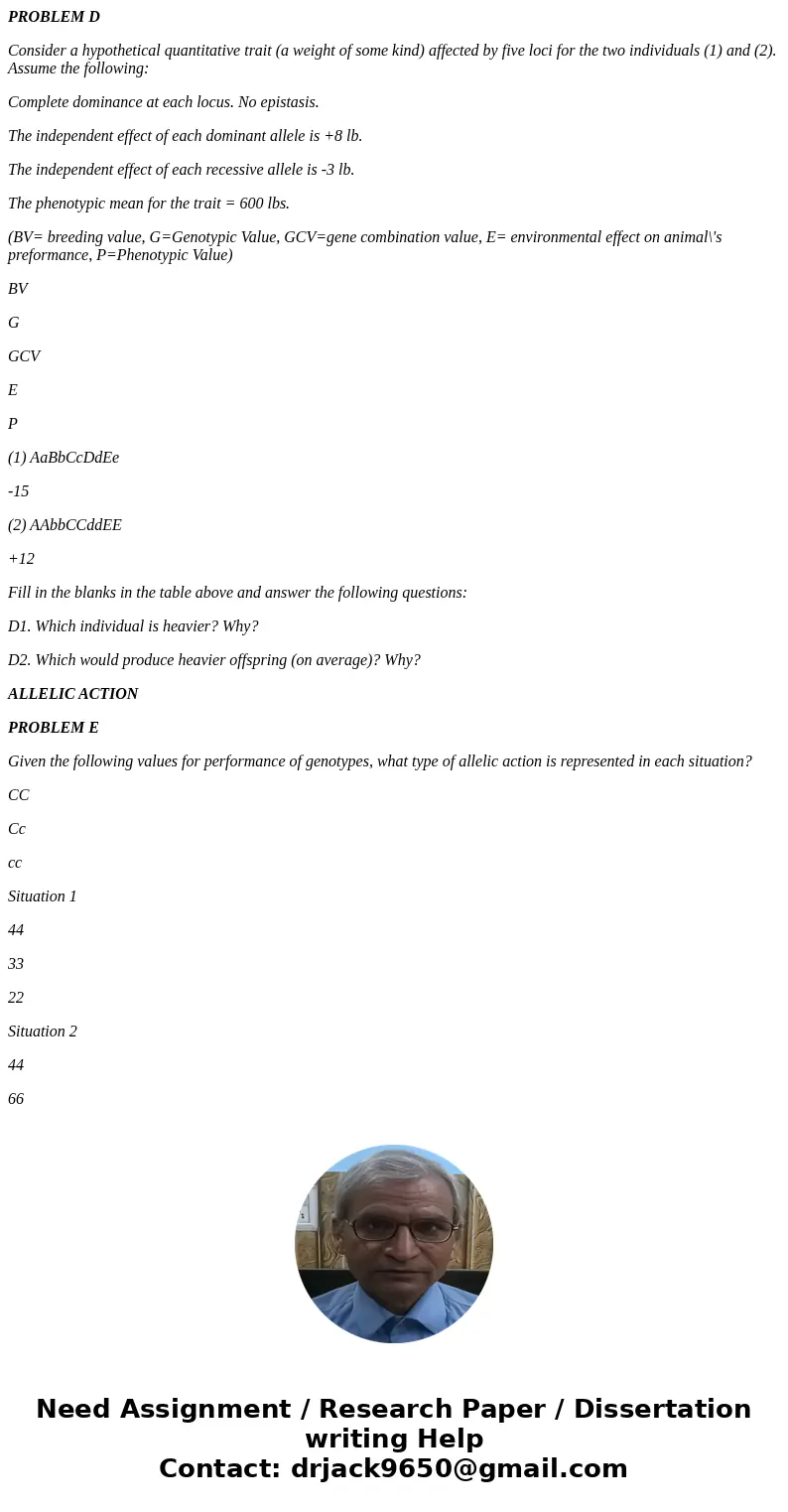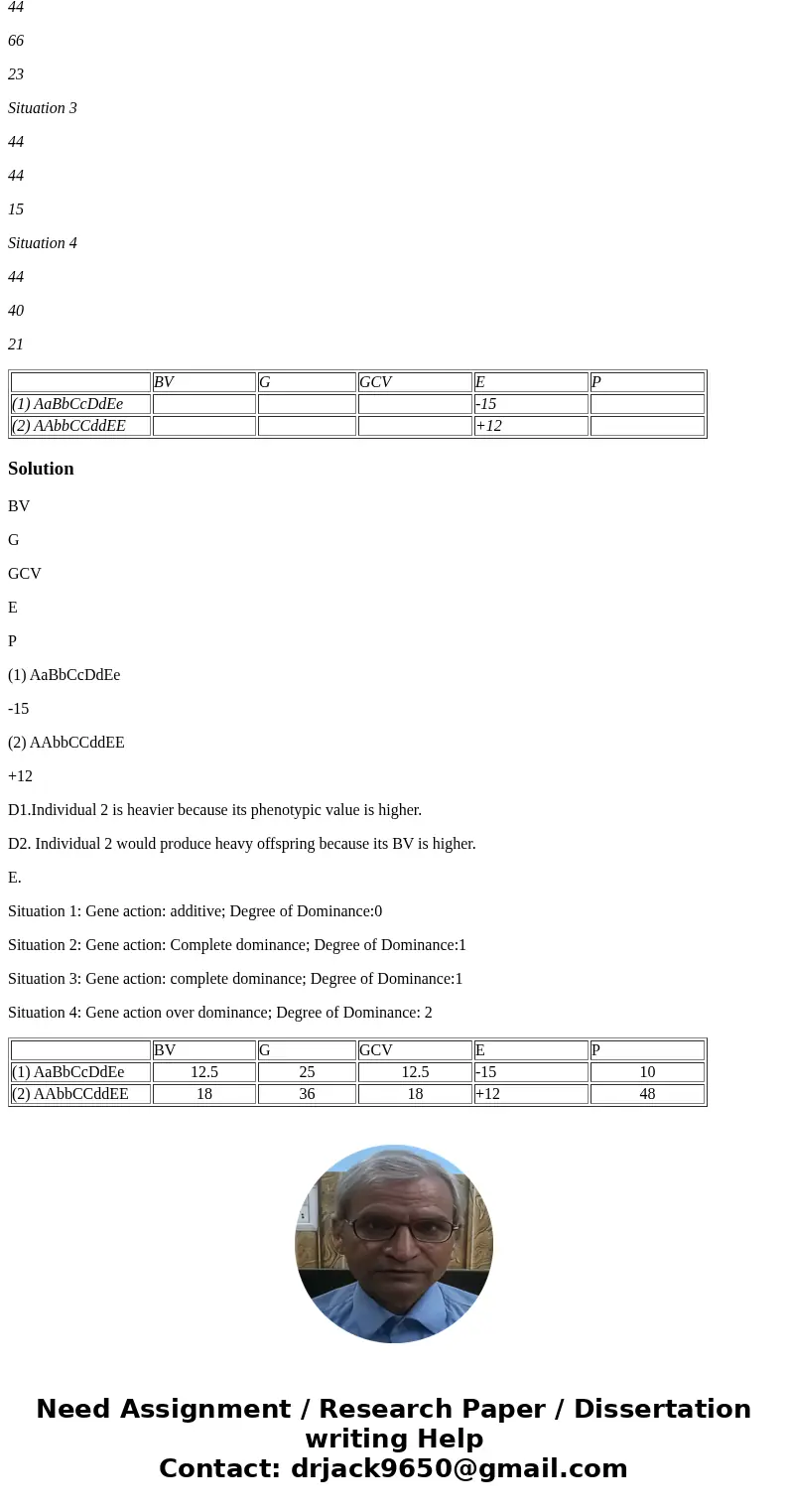PROBLEM D Consider a hypothetical quantitative trait a weigh
PROBLEM D
Consider a hypothetical quantitative trait (a weight of some kind) affected by five loci for the two individuals (1) and (2). Assume the following:
Complete dominance at each locus. No epistasis.
The independent effect of each dominant allele is +8 lb.
The independent effect of each recessive allele is -3 lb.
The phenotypic mean for the trait = 600 lbs.
(BV= breeding value, G=Genotypic Value, GCV=gene combination value, E= environmental effect on animal\'s preformance, P=Phenotypic Value)
BV
G
GCV
E
P
(1) AaBbCcDdEe
-15
(2) AAbbCCddEE
+12
Fill in the blanks in the table above and answer the following questions:
D1. Which individual is heavier? Why?
D2. Which would produce heavier offspring (on average)? Why?
ALLELIC ACTION
PROBLEM E
Given the following values for performance of genotypes, what type of allelic action is represented in each situation?
CC
Cc
cc
Situation 1
44
33
22
Situation 2
44
66
23
Situation 3
44
44
15
Situation 4
44
40
21
| BV | G | GCV | E | P | |
| (1) AaBbCcDdEe | -15 | ||||
| (2) AAbbCCddEE | +12 |
Solution
BV
G
GCV
E
P
(1) AaBbCcDdEe
-15
(2) AAbbCCddEE
+12
D1.Individual 2 is heavier because its phenotypic value is higher.
D2. Individual 2 would produce heavy offspring because its BV is higher.
E.
Situation 1: Gene action: additive; Degree of Dominance:0
Situation 2: Gene action: Complete dominance; Degree of Dominance:1
Situation 3: Gene action: complete dominance; Degree of Dominance:1
Situation 4: Gene action over dominance; Degree of Dominance: 2
| BV | G | GCV | E | P | |
| (1) AaBbCcDdEe | 12.5 | 25 | 12.5 | -15 | 10 |
| (2) AAbbCCddEE | 18 | 36 | 18 | +12 | 48 |


 Homework Sourse
Homework Sourse